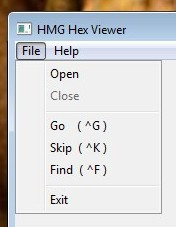.AND.
Logical AND--binary (Logical)
------------------------------------------------------------------------------
Syntax
<lCondition1> .AND. <lCondition2>
Type
Logical
Operands
<lCondition1> and <lCondition2> are logical expressions to AND.
Description
The .AND. operator is a binary logical operator that executes a logical
AND operation using the following modified Boolean rules:
. Returns true (.T.) if both <lCondition1> and <lCondition2>
evaluate to true (.T.)
. Returns false (.F.) if either <lCondition1> and <lCondition2>
evaluate to false (.F.)
Warning! In a departure from Summer '87 and other dialect behavior,
Clipper shortcuts the evaluation of .AND. operands. This means that
<lCondition1> and <lCondition2> are both evaluated only when
<lCondition1> evaluates to TRUE (.T.). If <lCondition1> evaluates to
FALSE (.F.), the .AND. operation is FALSE (.F.) and <lCondition2> is
therefore not evaluated.
For backward compatibility, shortcutting can be suppressed by compiling
with the /Z option.
Examples
. This example shows .AND. results using different operands:
? .T. .AND. .T. // Result: .T.
? .T. .AND. .F. // Result: .F.
? .F. .AND. .T. // Result: .F. (shortcut)
? .F. .AND. .F. // Result: .F. (shortcut)
See Also: .NOT. .OR.

